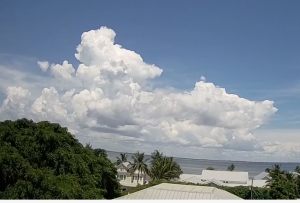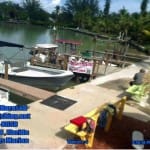Captiva Fishing: Please Click For Rates & To Book A Captiva Fishing Charter Or Call 239-472-8658.
Live Weather Cams Here.

Sanibel Island Fishing Charters, August 20, 2018: Flounder, Catch & Release!
Captiva Fishing: Please Click For Rates & To Book A Captiva Fishing Charter Or Call 239-472-8658.
Live Weather Cams Here.
Please Click To Rent Homes Direct From Captiva Homeowners; No VRBO Booking Fees.
Captiva Fishing Guide Report: Monday, August 20: Flounder, Captain Joe’s Charters; red tide impact has lessened a bit and fishing is a lot better, but it depends on wind and tide movement; Caloosahatchee freshwater releases also still a huge near-term and long-term problem; red tide impact offshore of Boca Grande Pass and Cayo Costa beaches; most of the dead fish have been removed from Boca Grande, Cayo Costa, North Captiva, Captiva & Sanibel beaches.
Extremely frustrating. We need wholesale changes in Florida state government. It is not a Republican or Democrat issue – it is a Big Sugar control everyone issue. It is stunning how we continue to let the sugar industry and the agriculture north of Lake Okeechobee to damage the water and all of Florida.
We’re located in Castaways Marina, Santiva, Sanibel Island, just before the Blind Pass bridge to Captiva Island.
Please click here to Book A Charter or call 239-472-8658.
![Flounder, Catch & Release, Sanibel Island Fishing Charters & Captiva Island Fishing Charters, Sanibel Island, Friday, March 30, 2018, [File Photo: November 17, 2017].](http://www.captivafishing.net/wp-content/uploads/2018/03/Flounder-11-23-17.jpg)

Captiva Fishing Charters
Redfish continue to be less prevalent; for more information just use the search box and search on any species for recent fishing reports, background on any species, and other recent fishing, water quality reports, and information.
“Flounders are a group of flatfish species. They are demersal fish found at the bottom of oceans around the world; some species will also enter estuaries.
![Flounder, Sanibel Fishing & Captiva Fishing, Sanibel Island, Friday, November 24, 2017, [File Photo - Thursday, May 11, 2017].](http://www.captivafishing.net/wp-content/uploads/2017/05/Flounder-5-10-17-e1494556099242.jpg)
- Western Atlantic
- Gulf flounder – Paralichthys albigutta
- Southern flounder – Paralichthys lethostigma
- Summer flounder (also known as fluke) – Paralichthys dentatus
- Winter flounder – Pseudopleuronectes americanus
- European waters
- European flounder – Platichthys flesus
- North Pacific
- Halibut – Hippoglossus stenolepis
- Olive flounder – Paralichthys olivaceus

In its life cycle, an adult flounder has two eyes situated on one side of its head, while at hatching one eye is located on each side of its head. One eye migrates to the other side of the body through a process of metamorphosis as it grows from larval to juvenile stage. As an adult, a flounder changes its habits and camouflages itself by lying on the bottom of the ocean floor as protection against predators.[1] As a result, the eyes are then on the side which faces up. The side to which the eyes migrate is dependent on the species type.

Flounders ambush their prey, feeding at soft muddy areas of the sea bottom, near bridge piles, dock, and coral reefs.
A flounder’s diet consists mainly of fish spawn, crustaceans, polychaetes and small fish. Flounder typically grow to a length of 22–60 centimeters (8.7–23.6 in), and as large as 95 centimeters (37 in). Their width is about half their length. Male Platichthys are known to display a pioneering spirit, and have been found up to 80 miles off the coast of northern Sardinia, sometimes with heavy encrustations of various species of barnacle.

Fluke, a type of flounder, are being farm raised in open water by Mariculture Technologies in Greenport, New York.[2]
World stocks of large predatory fish and large ground fish, including sole and flounder, were estimated in 2003 to be only about 10% of pre-industrial levels, largely due to overfishing. Most overfishing is due to the extensive activities of the fishing industry.[3][4][5][6] Current estimates suggest that approximately 30 million flounder (excluding sole) are alive in the world today.[citation needed] In the Gulf of Mexico, along the coast of Texas, research indicates the flounder population could be as low as 15 million due to heavy overfishing and industrial pollution.[citation needed]

According to Seafood Watch, Atlantic flounders and soles are currently on the list of seafood that sustainability-minded consumers should avoid.[7]” Please see more information here.

Please click here to Book A Charter or call 239-472-8658 and here for Live Sanibel Traffic Cams.
Click here for College Of Fishing Hats & Apparel.
We’re located in Castaways Marina, Santiva, Sanibel Island, just before the Blind Pass bridge to Captiva Island.

After a fierce storm, Turner Beach, the beach adjoining the Pass, is frequently covered with a bounty of shells from Olives to Fighting Whelks to the more common Conchs. The fishing is also renowned for sharks in the summer, tailing redfish on the bayside flats and snook under and off the Blind Pass bridge. Because Turner Beach faces Westward, the sunsets are spectacular and a popular viewing point for residents and visitors alike.

Really appreciate if you would like us on Facebook.
Fair winds and following seas,
Captain Joey Burnsed ~ please click calendar or call 239-472-8658 to book a Sanibel & Captiva Islands, Boca Grande or Fort Myers fishing guide trip or shelling charter.





